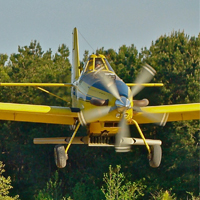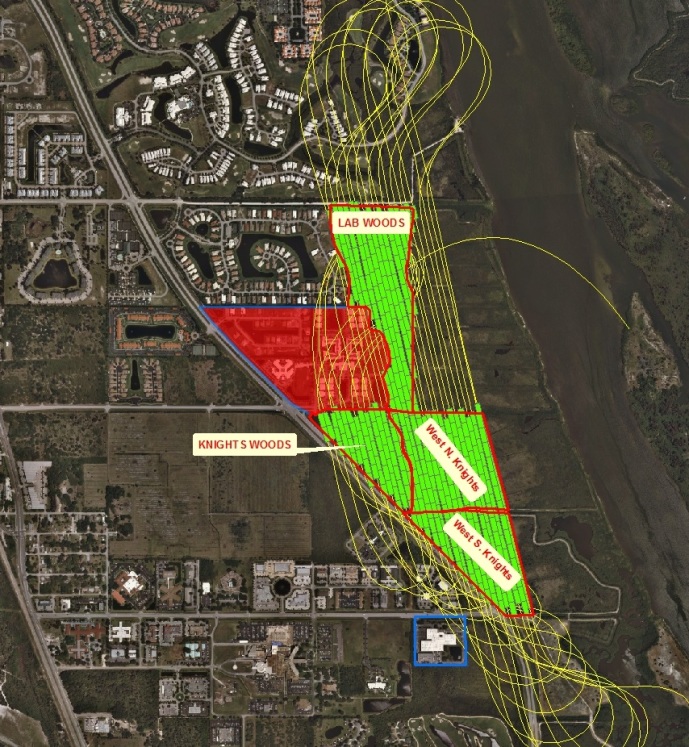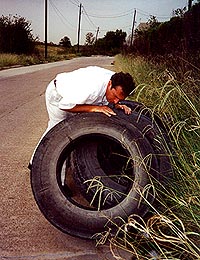THERE IS A MISCONCEPTION that the Indian River Mosquito Control District goes around on a scheduled basis spraying from trucks and airplanes.
This is not the case. It is against the law to do mosquito treatment on a scheduled basis. As such, treatment is performed based on “service requests,” where people call in who want to be sprayed or to report mosquito problems. Each month the District compiles a listing of service requests.
There are two types of spraying. One is from the air and one is from a truck.
Spraying from the air is done over salt marshes. The spray consists of a granular materials that seep into the ground to kill “salt marsh mosquitos.” There is a science to the size of the granular droplet. It cannot be too big to too small to do its job. Pictured below is an aerial image of airplanes spraying salt marshes in the area of Indian River Boulevard. The planes use guidance systems to control the movement of the aircraft to follow a certain trajectory, so that the spraying of the granolas will not overlap. You can see the perfect straight lines where the airplanes have been spraying.
The spraying from trucks consists of a common insecticide used in a household. It is a common ingredient for treating a child with head lice. It is approved by the EPA at the Federal level and the Department of Consumer Services at the State level.
Another effort to control mosquitos conducted by the District is their “Waste Tire Collection Program.” According to Doug Carlson, Director of the Mosquito Control District, “abandoned tires on the side of the road or laying out around the countryside are one of the biggest producers of mosquitos.” (Even though it is illegal to dump tires in Indian River County.)
The District makes a concerted effort to drive around the country side to collect abandoned tires. There are 100 tires in a ton. Just as the District tracks service requests, it also tracks the tires it collects. For the period 2013-2014 it collected 21.9 tons of tires. The previous year it collected 44.1 tons. Since 10/1/92 it has collected 92,035 tons.
We extend a special thanks to Director Carlson for his contribution to this article.



Please share the active ingredient(s) of the insectiside(s) used in aerial applications over designated areas in Indian River County.
LikeLike
We suggest you contact Doug Carlson at the Mosquito District. http://fresh.irmosquito.com/index.php/. He will be very helpful.
LikeLike
How can we contact the place so we can get some one out here around us .
LikeLike
Thank you for your comments. Here is a link for mosquito control: http://fresh.irmosquito.com/index.php/district/about-us/contact-us
LikeLike